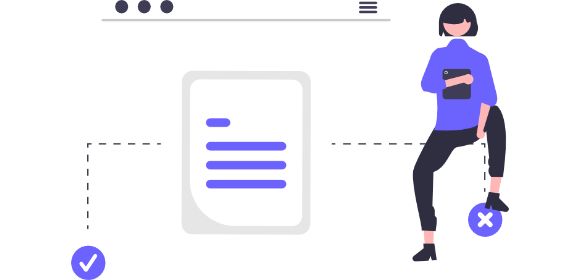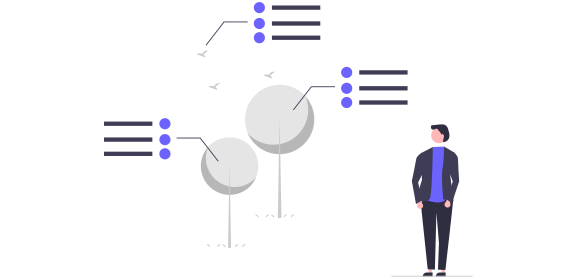A Brief Guide to Automated Speech Recognition

A Brief Guide to Automated Speech Recognition
Artificial intelligence is changing the way we operate as a society, from the way we work, to the way we teach, learn, and go about our daily lives. And one of the most impactful AI innovations is Automated Speech Recognition, or ASR.
This powerful technology converts spoken language into text, and has a multitude of use cases - not least powering Transcribe!
In this guide we'll explore how ASR works, where it is currently used, the main challenges it currently faces, and what the future of ASR looks like.
Let's get started!
Jump to:
What is ASR?
ASR, short for Automated Speech Recognition, is a technology that uses machine learning and artificial intelligence to convert human speech into text. It's a common technology that many of us use every day without even realizing - think Siri, Alexa, and Transcribe.
ASR is different from Natural Language Processing (NLP), in that ASR simply aims to convert speech data into text data, whereas NLP aims to "understand" language and its meaning. These two technologies often work in harmony with one another to provide the most value to the user.
Learn about the history of speech recognition.
How does ASR work?
We could get really technical here, but for the sake of understanding, here's how ASR works in the simplest terms possible:
1. You speak into a device like a microphone or smartphone.
2. The device records your voice as a series of sound waves.
3. The recorded sound waves are transformed into digital data, which is like turning your voice into a language that computers can understand.
4. The ASR system extracts important features. Think of these features as unique patterns that represent different parts of the sound - like vowels, consonants, and tones.
5. The ASR system takes these features and tries to match them with the patterns it has learnt to figure out what words you're saying. It looks for the pattern that is the closest match to what it heard. This might mean choosing between similar words or phrases.
6. Having identified your words, your ASR can now respond to you in a useful way. That might mean turning your spoken words into written words on a screen, or answering your questions with a verbal response.
Where is ASR used?
ASR is used in a diverse range of applications. Examples of automatic speech recognition systems include:
- Voice assistants
ASR is a key technology behind popular voice assistants like Siri, Alexa, and Google Assistant. When you talk to these virtual assistants, they use ASR to understand your voice commands and questions. ASR converts your spoken words into text, which the assistant then processes to provide relevant information or perform actions like setting alarms, playing music, sending messages, or giving you weather updates.
- Call center automation and customer service
ASR plays a crucial role in automating call center interactions. When you call a customer service line, ASR is often used to understand and interpret your spoken inquiries or requests. It can find your account information, direct you to the appropriate department, and even provide automated responses, making customer service operations that much more efficient.
- Transcription services
Automatic transcription services, like Transcribe, use ASR to convert speech into text, providing you with transcripts within minutes, if not seconds. This saves time and effort that would otherwise be spent on manual transcription. This is useful for everyone from businesses and academics to journalists, podcasters, and students.
- Language translation services
ASR has been integrated into language translation services to provide real-time translation of spoken language. It works by converting spoken words in one language into text and then translating that text into another language. This is particularly useful in multilingual settings such as conferences, helping to bridge language barriers.
- Captioning for videos and live broadcasts
ASR is used to generate captions for videos, movies, TV shows, and live broadcasts. This makes content more accessible to individuals who are deaf or hard of hearing, as well as to those watching videos in noisy environments.
The main challenges in ASR
ASR is coming on leaps and bounds, with better accuracy rates than ever before. But it's not without its challenges. Here are some of the most common challenges faced by ASR technology:
- Accents, dialects, and speaking styles
ASR systems need to recognize and understand speech from people with different accents, dialects, and ways of speaking. This can be tricky because the same word might sound different when spoken by someone from a different region or with a different accent. The system has to be trained to handle these variations to accurately convert spoken words into text.
- Background noise
ASR has a hard time when there's background noise or other sounds in the environment. Imagine trying to talk to someone at a noisy party - it can be tough to hear each other clearly. Similarly, ASR struggles to understand speech when there's noise from things like traffic, music, or people talking in the background.
- Homophones and ambiguous words
Homophones are words that sound the same but have different meanings. For example, "their" and "there" sound alike but mean different things. ASR systems can get confused by these kinds of words because they rely on context to understand which word is being spoken. If the context is unclear, the system might guess the wrong word.
- Umms and ahhs
When we talk naturally, we often use filler words like "uh" and "um", and we often pause or repeat ourselves. This can confuse ASR systems because they're not sure whether to include them in the transcription or ignore them. Dealing with these natural speech patterns requires advanced algorithms and models.
- Limited training data for certain languages and topic
ASR systems need a lot of examples to learn how to recognize different words and phrases accurately. For some languages or specialized fields, there might not be enough training data available. This can lead to lower accuracy in recognizing those languages and specific terminologies.
The future of ASR
ASR technology is constantly evolving and developing. One of the most recent advancements has been OpenAI's Whisper.
Trained on 680,000 hours of multilingual audio data, covering a broad range of topics and accents, the ASR system is helping apps like Transcribe to provide you with transcriptions that are more accurate - and in more languages - than ever before. The use of such a large and diverse dataset has improved its ability to understand speech, because of the different accents, background noise, and subjects covered.
As the months and years go on, we expect the accuracy of ASR software to keep improving through continued research in deep learning and AI. Through integration with NLP technologies, we also expect to see improvements in the way machines can understand emotion and sentiment behind speech.
Not only will this help AI systems to communicate in an even more "human-like" way, but it will also help them to understand subtext and secret meanings.
Discover more AI predictions for the future.
Final thoughts
We hope you've enjoyed learning about ASR. For more information about artificial intelligence and how it can be used to improve your ways of working, check out our articles on the best AI tools for business, the best AI productivity tools, and AI for startups.

The 9 Best AI Tools for Business in 2023
Using AI tools can help to automate tasks, speed up processes and save your business time and money. Discover the best AI tools for businesses large and small.

9 AI Tools to Boost Productivity in 2023
Want to be more productive? Discover the nine best AI productivity apps that'll help you in the realms of content creation, time management, focus, and more!

6 Ways Businesses Can Leverage ChatGPT and GPT-4 for Success
From data entry to customer support, discover how Large Language Models like ChatGPT and GPT-4 can revolutionise the way your business operates.